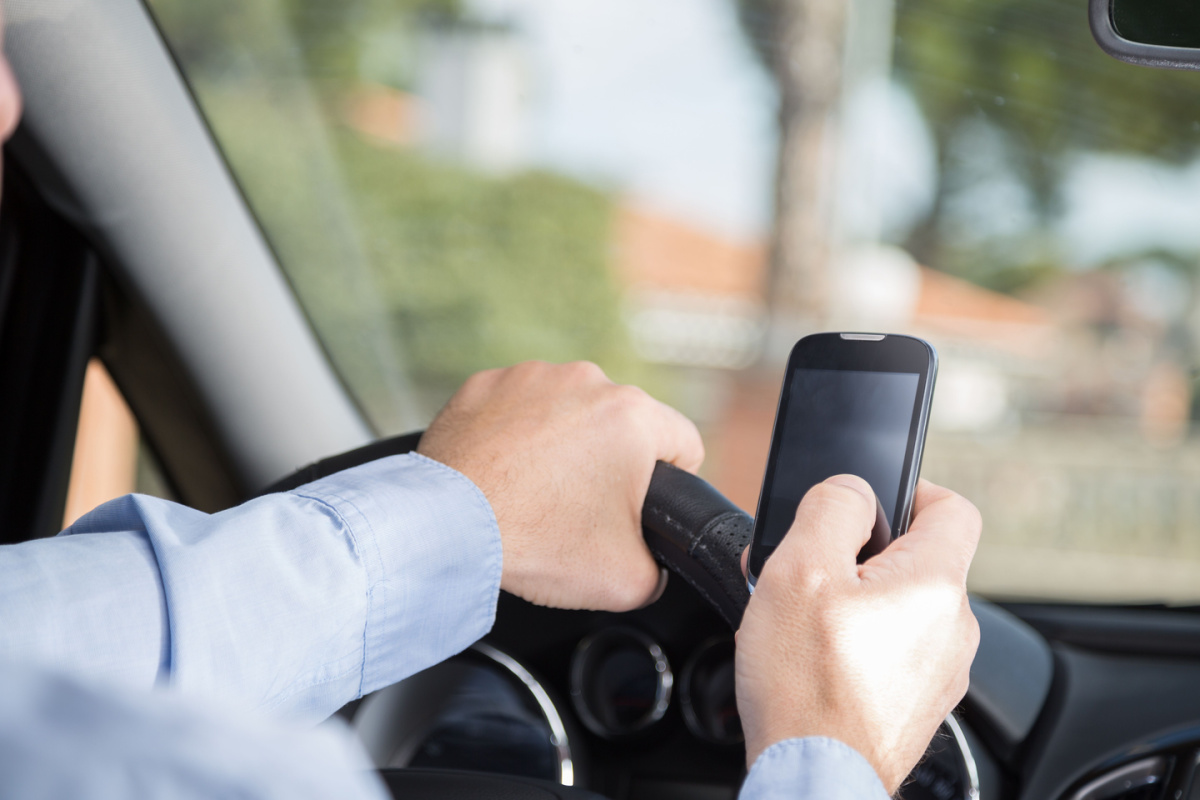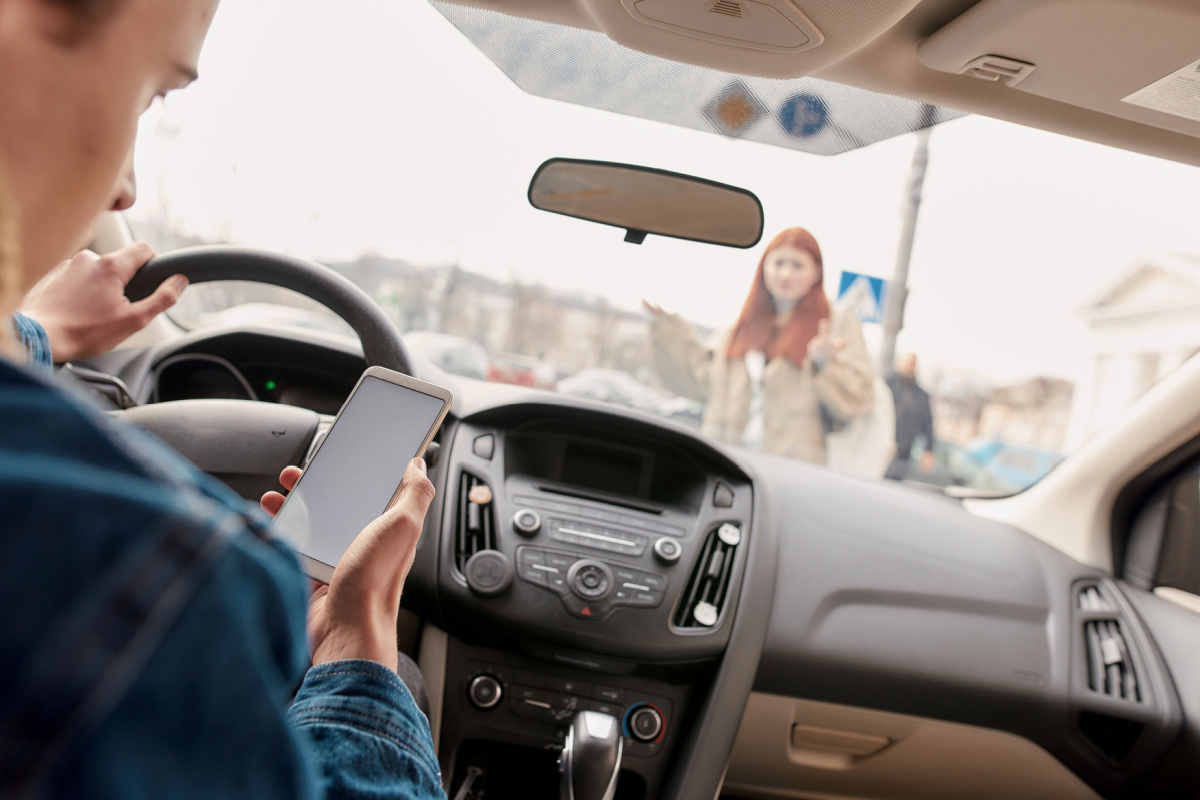
Texting while driving has become an increasingly common issue, reaching far and wide across our modern society. As cellphones have grown integral to our daily routines, the temptation to stay connected, even behind the wheel, has escalated. It’s not uncommon to see drivers glancing down at their phones at traffic lights, or even while cruising on the highway. This habit, however, is not just a mere annoyance but a serious danger. In Louisiana, distracted drivers often play a role in accidents. Between the years 2016 and 2020, distractions originating either inside or outside the vehicle resulted in the loss of 193 lives. In the year 2020 alone, an additional 23,010 individuals were injured in accidents involving distracted drivers.
When drivers are behind the wheel, their full attention should be on the road. However, texting while driving leads to a phenomenon known as inattention blindness. This means that even if the driver is looking at the road, their brain isn’t fully processing what it’s seeing because it’s also attempting to read or compose a text message. It’s comparable to trying to watch a movie and read a book simultaneously; they’re not going to understand the plot of either. This inattention can result in missing crucial cues, such as another car braking ahead or a pedestrian crossing the street.
Texting while driving doesn’t just affect one’s attention and response times, it has real-world, serious consequences. The figures related to text-related accidents are sobering. For example, according to the National Safety Council, around 1.6 million crashes each year are directly linked to cell phone use while driving. Even more startling, text messaging while driving makes a crash up to 23 times more likely. These accidents aren’t just fender-benders either. They often lead to serious injuries or, in the worst cases, loss of life. These shocking statistics make it clear: the fast-paced world of texting and the fast lane of driving do not mix. It’s a high-risk combination that everyone should avoid.
Many drivers, especially the younger ones, have a false sense of security when it comes to texting and driving. They believe that they can handle their phones and the wheel at the same time, underestimating the danger. Some argue that they only text at stoplights, assuming it’s safe, but research shows that this still affects driver performance. Others claim that they can text without looking at the screen, but this overconfidence can lead to serious mistakes on the road. Moreover, some drivers think it’s less risky to read texts than to write them while driving. However, both activities divert attention from driving and increase the risk of accidents. These misconceptions about texting and driving only serve to put more lives at risk.
The legal consequences of texting while driving are becoming more stringent, reflecting the severity of the issue. Louisiana law dictates it is illegal to send a text message or post online while driving on any public road, and if caught, drivers can be fined $175 for the first offense, and $500 for each additional violation. There are also indirect legal effects. If a driver is involved in a car accident and it is proven they were texting at the time, it can be considered as evidence of negligence. This could affect the outcome of any legal actions resulting from the accident. These legal ramifications show that authorities are taking this issue seriously and are committed to making the roads safer.
When a driver is involved in an accident due to texting while driving, it can start a domino effect that touches more than just their health and safety. One significant repercussion is the impact on car insurance premiums. Insurance companies determine rates based on risk assessment. A driver with a record of texting-related accidents is considered high risk. Consequently, their insurance premiums increase often significantly after such incidents. In some cases, the insurer may even choose to not renew the policy due to the heightened risk. This financial fallout can add up over time, making the momentary convenience of texting while driving an expensive habit. It’s clear: the ripple effects of a texting-related accident can be long-lasting and costly.
Breaking the habit of texting while driving is not just about personal commitment, it’s also about creating an environment that promotes safe driving. One simple step is turning off notifications or setting your phone to “Do Not Disturb” mode while driving. This reduces the temptation to check messages. Some people find it helpful to place their phone out of reach while driving, such as in the glove compartment or the back seat. Apps are also available that can block incoming messages or send automatic replies when you’re driving.
While technology has contributed to the problem of texting while driving, it also offers potential solutions. On the one hand, mobile devices can be a distraction, luring drivers into dangerous multi-tasking. On the other hand, advancements in technology are helping combat this issue. For instance, many modern vehicles come with built-in systems that can read text messages out loud and allow drivers to respond by voice, keeping their hands on the wheel and eyes on the road. There are also apps that can disable texting when they detect the phone is in a moving vehicle. It’s a reminder that technology itself isn’t the problem; it’s how we use it. Used wisely, it can be part of the solution to texting while driving.

From a personal injury standpoint, victims of texting-related car accidents may have several legal options. If an investigation shows that the other driver was texting at the time of the accident, it can serve as evidence of negligence. Victims can potentially seek compensation for damages such as medical expenses, lost wages, and emotional distress. Additionally, in some extreme cases where the texting driver’s behavior was particularly reckless, punitive damages might be pursued. This is not to punish the driver but to serve as a deterrent, sending a clear message to society about the dangers and unacceptable nature of texting while driving.
If you have been involved in a car accident with a distracted driver in New Orleans, please contact the Charbonnet Law Firm, LLC online, or call our office at (504) 294-5094.

With over 50 years of legal experience serving families in the New Orleans area and surrounding Louisiana communities, our firm takes pride in providing clients with personalized legal services tailored to individual needs.